What is cutter compensation?
Cutter compensation is a common practice in machining. Coordinates are programmed to the tool’s cutting edge, and the controller compensates for the position according to the tool’s offset measurements. The offset for each cutter is stored in a table and activated by the G Codes G41 – G44.
Cutter compensation G codes
| G Code | What it does |
|---|---|
| G40 | Tool compensation cancel |
| G41 | Tool compensation left |
| G42 | Tool compensation right |
| G43 | Tool length compensation (+) |
| G44 | Tool length compensation (-) |
| G49 | Cancel tool length compensation |
Cutter compensation in milling (g41 / G42 / G43 / G44)
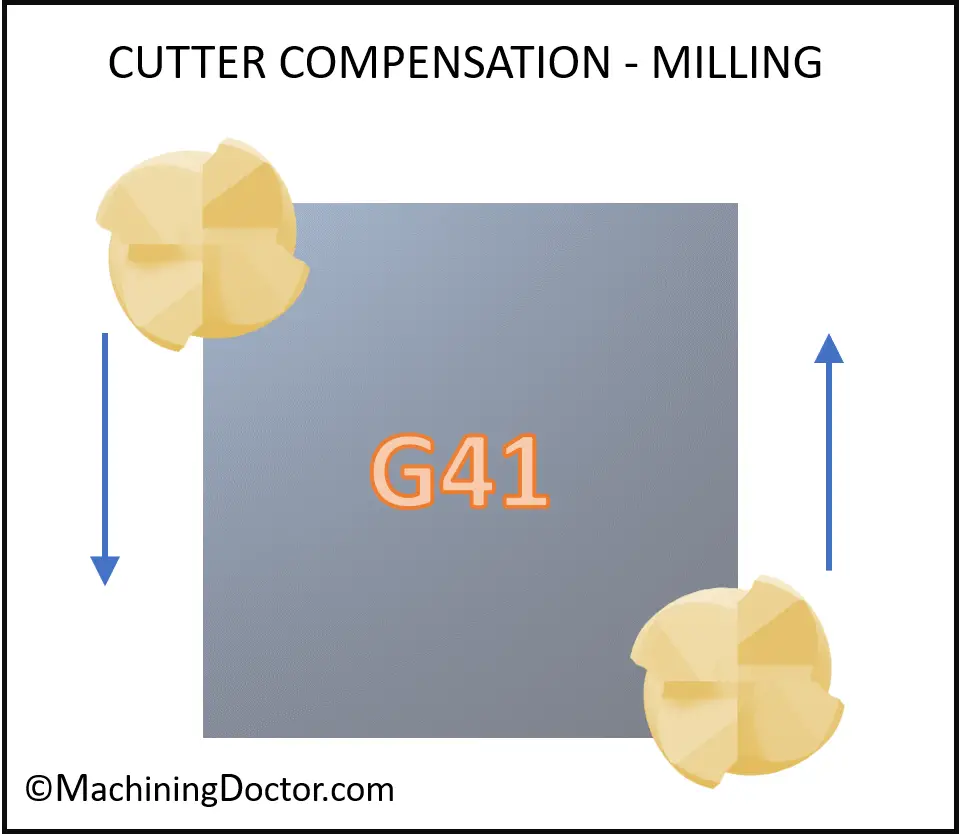
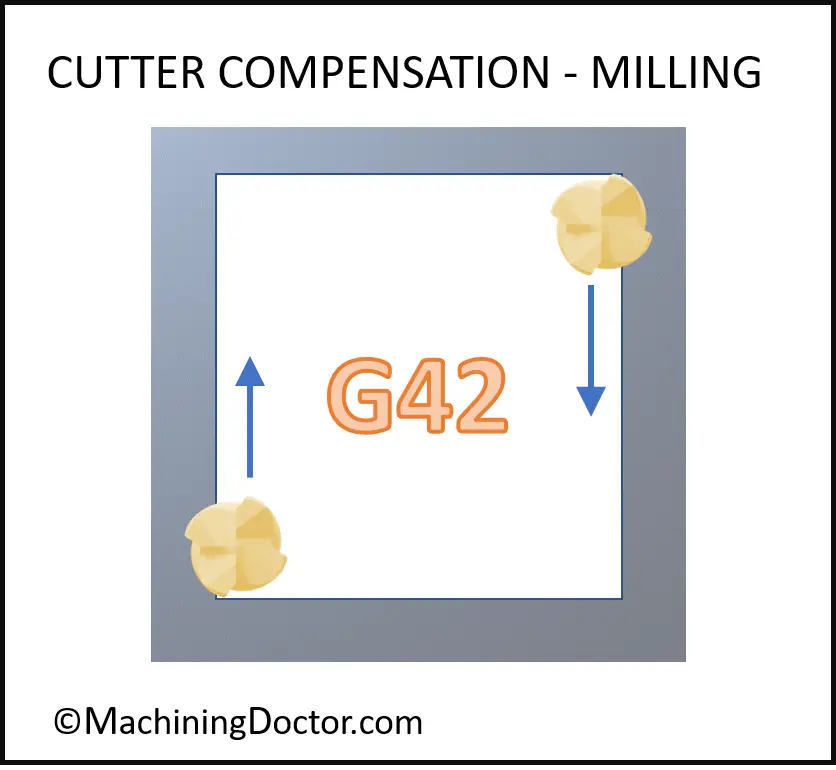
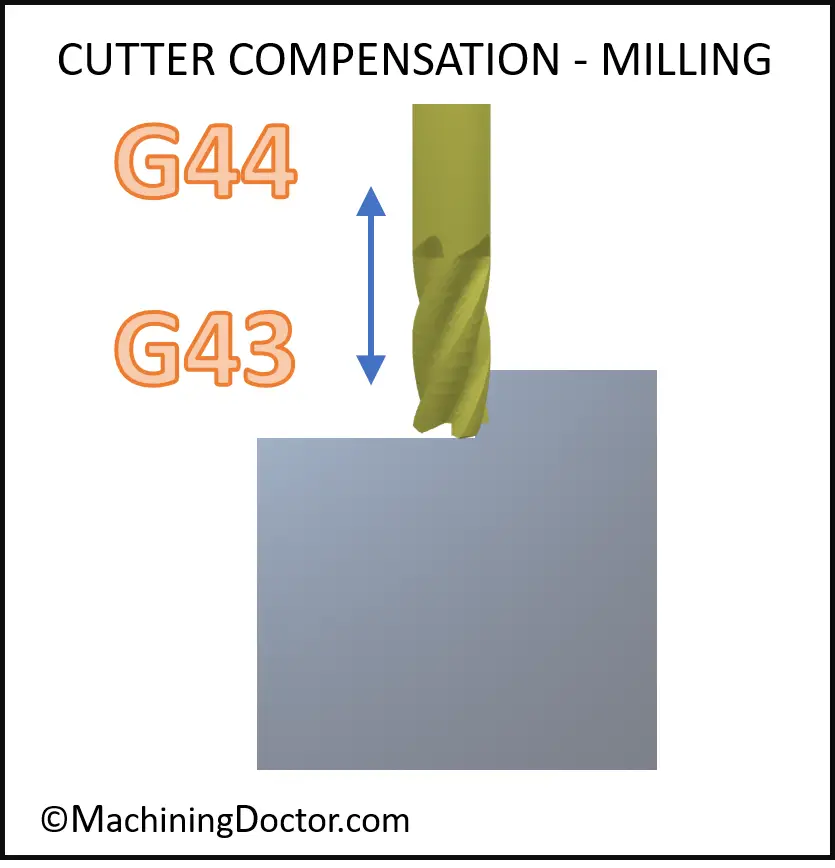
In milling, we use the term Cutter Diameter Compensation (CDC). The cutter diameter is measured and stored in the machine’s memory for each tool. When a new tool is loaded, the controller will adjust the position of the cutter accordingly. It is very convenient since the programming becomes independent of the tool diameter. For example, the original programmer had a 1” milling cutter in mind. Later, due to a shortage of stock or any other reason, the operator on the shop floor decided to use a 0.75” milling cutter. Without CDC, the whole program would have to be re-written since all the coordinates are shifting.
- G code G41 selects “cutter compensation left”. The tool is moved to the left of the programmed path to compensate for the diameter of the cutter.
- G code G42 selects “cutter compensation right”. The cutter moves to the right of the toolpath.
The cutter’s overhang from the spindle datum is also measured and stored in the machine’s memory for each tool. When a tool is changed in the spindle, the controller adjusts the position of the cutter accordingly. It is very convenient since the programming becomes independent of the overhang. For example, On Sunday, the operator clamped the tool sticking out 2.27” out of the collet. On Monday, he replaced the tool, and the new one sicks out 2.54”. Here is where tool length compensation comes in handy since there is no need to change the program. G43 and G44 are used to activate tool length compensation.
Cutter compensation in turning (G code g41 – g44)
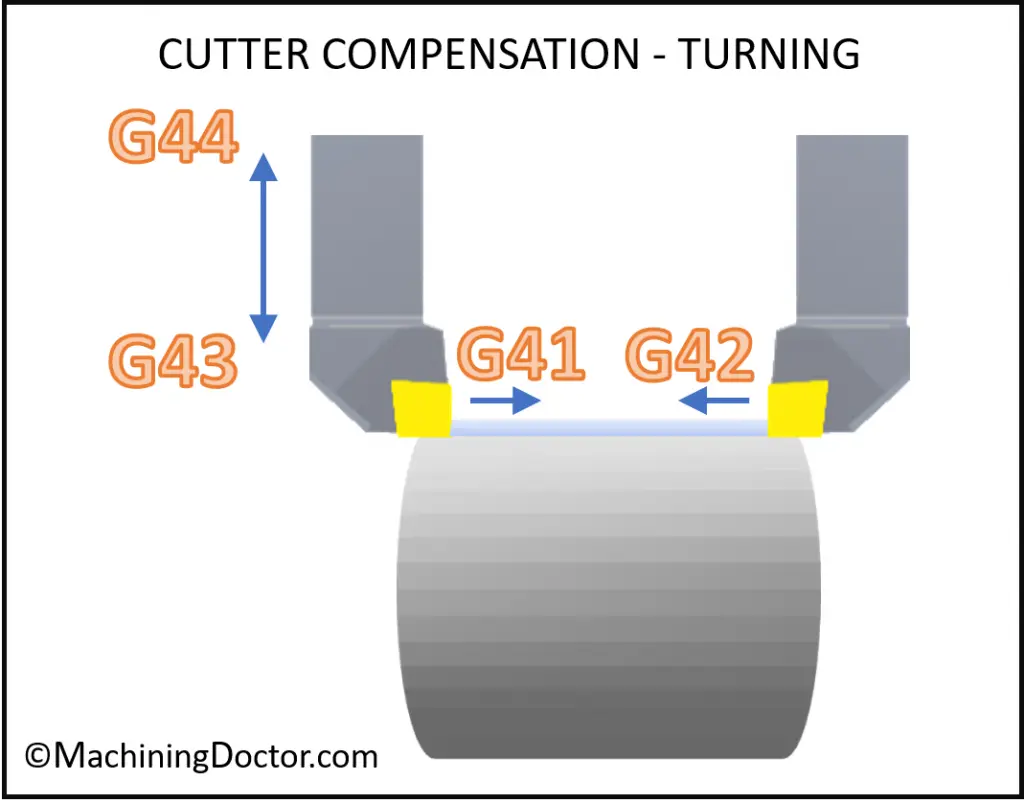
The principal in turning is the same as in milling. To have the programming independent of tool selection and how it is clamped in the machine. The term used on lathe machines is “Tool Nose Compensation” (TNC). G code G41 moves the tool to the left of the toolpath to compensate for the tool size. G code G42 moves the tool to the right of the toolpath.
What are the advantages of using cutter compensation?
- A similar program is used for different tool sizes. The program is based on the tool’s tip and not on its datum point or centerline.
- It’s easier to adjust and control the part’s dimensions. If we need to fix a small deviation from the drawing, we can modify the compensation value instead of changing the program.
How are the offset values measured?
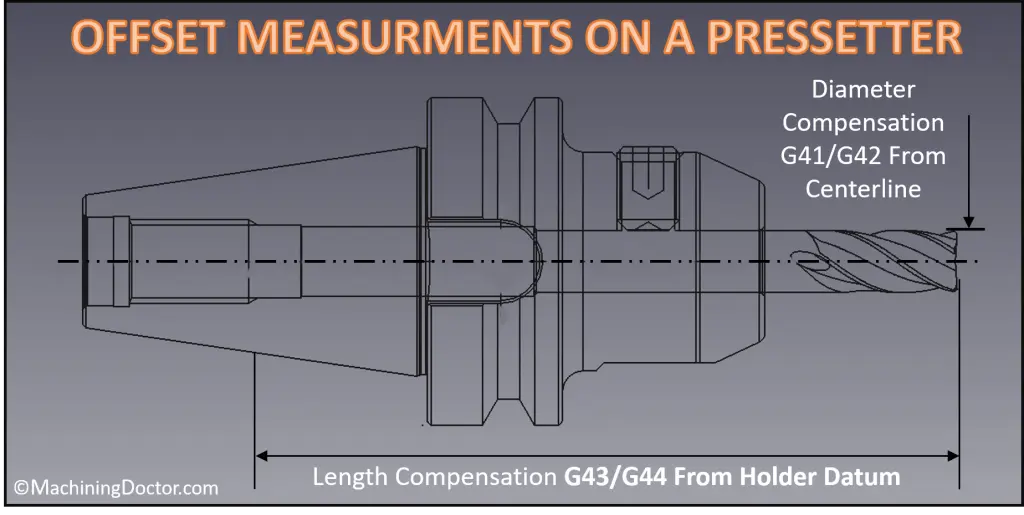
The offset values are measured relative to the tool holder’s datum on a tool presetter. Modern presetters in a modern shop will transmit the offset measurements directly to the machine or store them on the tool holder’s chip.
In more traditional environments, the values are written on a note that is attached to the tool holder. The operator enters these values into the machine’s controller when he puts the tool in the magazine.
Learn about more G-Codes









